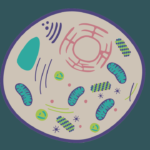These visible cues and clinical tests will help you detect whether your body has activated the autophagy process.

The activation of autophagy has garnered significant attention due to its remarkable health benefits. People use different ways to induce this process, including calorie restriction, intermittent fasting, exercise, and combinations. And often, they wonder if their bodies have initiated the autophagy process when they follow these different autophagy activation methods.
In this article, we will highlight different signs that may help you to detect autophagy activation in your body. While most of these signs can be detected independently, a few require clinical assessment.
Detect autophagy by yourself
Your body undergoes distinct changes during autophagy activation. Some of these changes are visible, allowing for easy detection. However, please note that while these changes might be signs of autophagy activation, they may not be exclusively linked to it.
- Feeling of fatigue: Fatigue, though commonly attributed to various health conditions, can also be connected to autophagy. This is particularly evident when practicing full-day fasting for autophagy induction. Interestingly, this feeling of fatigue tends to diminish as the body adapts to the autophagy activation process.
- Bad breath: One of the most noticeable signs of autophagy, especially during fasting, is bad breath. This occurs a few hours after commencing fasting. During autophagy, the body utilizes its own fat stores, leading to the production of molecules called ketones. These ketones can accumulate in the mouth, resulting in bad breath when they interact with oral bacteria. Dry mouth can exacerbate this condition, but it can be alleviated by brushing your teeth and staying hydrated.
- Improved skin: Improved skin quality is another observable sign associated with autophagy activation. Many individuals adopt fasting for autophagy to experience this benefit. However, it’s important to note that visible skin improvements might take time to manifest, typically after consistent fasting over a month or more.
- Improved brain functions: Autophagy plays a crucial role in maintaining proper brain function. Abnormal autophagy has been linked to various brain diseases. Activation of autophagy is particularly beneficial for cognitive function, with the hippocampus—a memory-rich region of the brain—being reliant on this process. A study published in Current Biology highlights the significance of autophagy activation in this context.
- Whiteness of the tongue: Many individuals practicing fasting for autophagy notice a white coating on their tongues. However, it’s important to differentiate this from potential oral conditions like thrush caused by Candida yeast overgrowth. Reduced saliva production during fasting can contribute to dry mouth and favor the growth of Candida.
Detect autophagy clinically
Detecting autophagy through clinical indicators involves specialized assessments that are typically conducted in laboratory settings.
Here’re the three main indicators of autophagy activation.
- Increased ketone bodies: Ketone bodies, produced when the body uses stored fats for energy during nutrient depletion, can serve as indicators of autophagy. Research indicates that elevated ketone levels are associated with autophagy activation. Studies have demonstrated this phenomenon in brain cells exposed to glucose-depleted media and in individuals following a ketogenic diet.
- Decreased insulin level: Insulin, a hormone involved in energy storage, shows an intricate relationship with autophagy. Research suggests that high insulin levels suppress autophagy activation, as autophagy is triggered in nutrient-deficient conditions. Decreased insulin levels are indicative of autophagy induction.
- Increased LC3 protein level: LC3, a pivotal autophagy-related protein, is commonly used as a marker of autophagy in research. This protein first synthesizes in the form of pro-LC3, which then subsequently converts into LC3-I form. Upon autophagy induction, the LC3-I undergoes some modifications and converts into LC3-II form. Hence, it’s the LC3-II form of LC3-II protein that is linked to autophagy.
Elevated levels of LC3-II are considered a reliable indicator of activated autophagy, though this measurement is typically limited to research settings.
In conclusion, detecting autophagy activation can be accomplished through observable changes in your body or specialized clinical assessments. While the signs discussed can offer valuable insights, it’s important to interpret them in conjunction with professional advice and further research.

